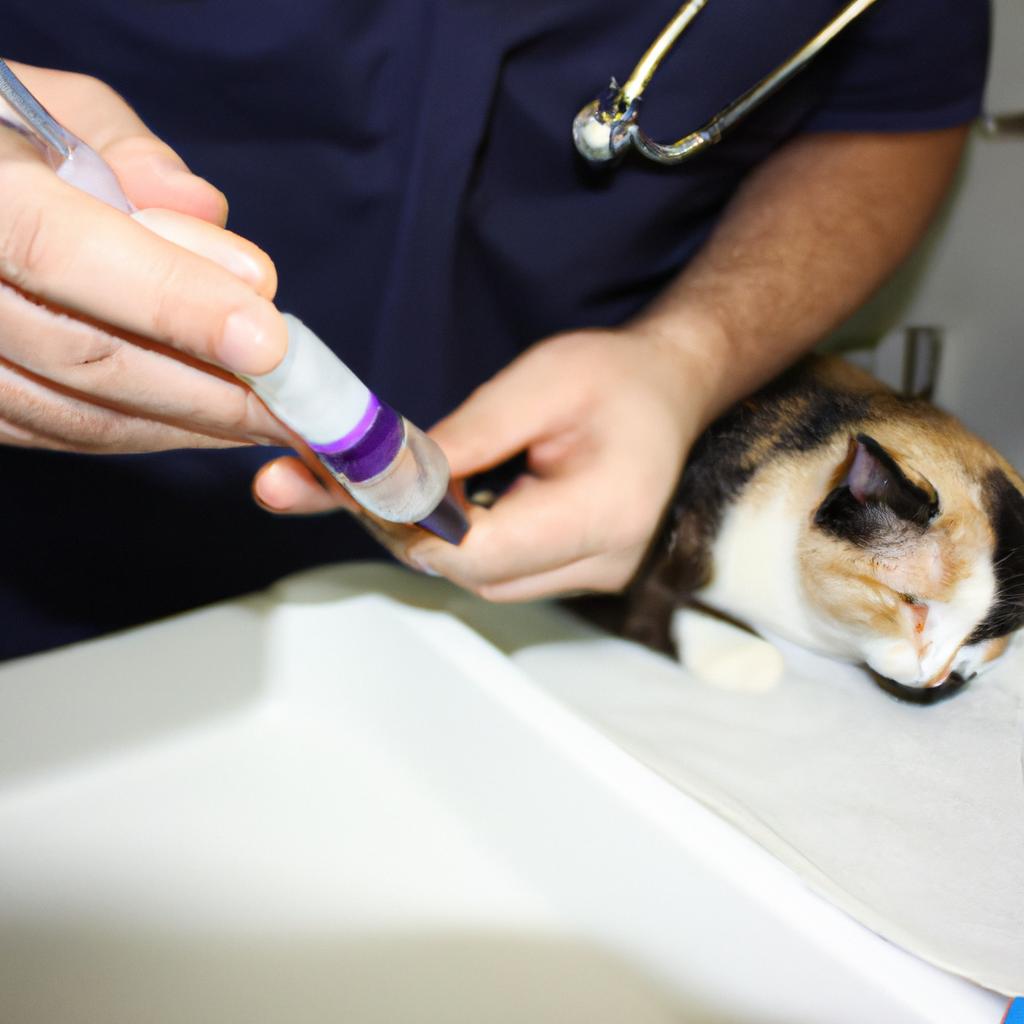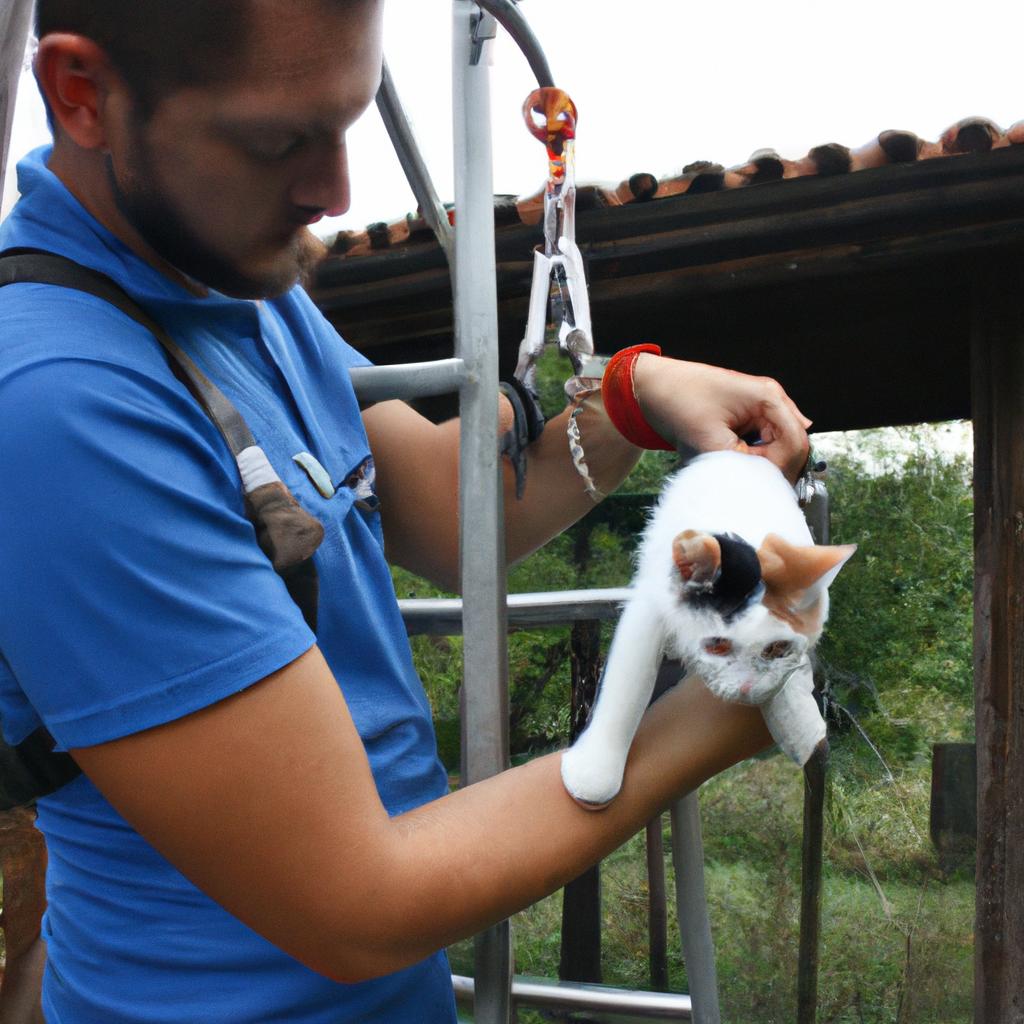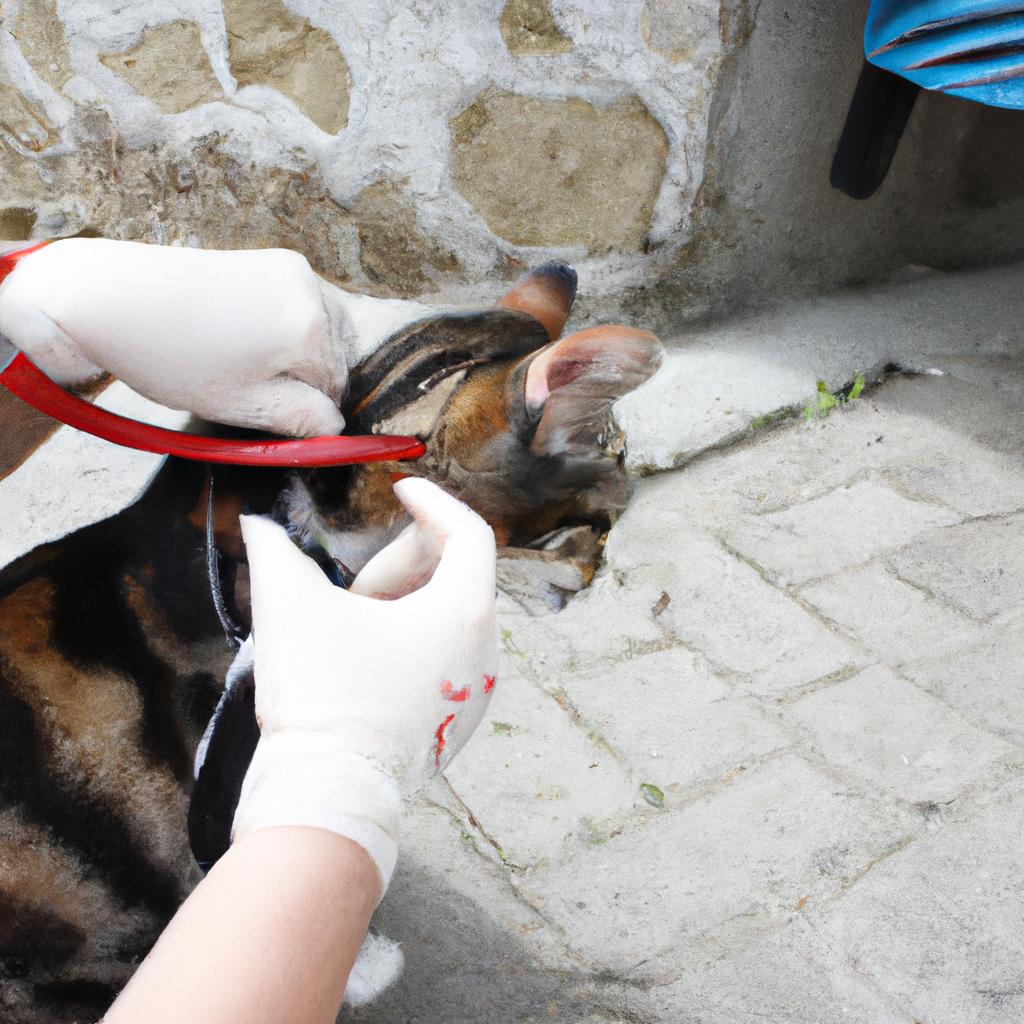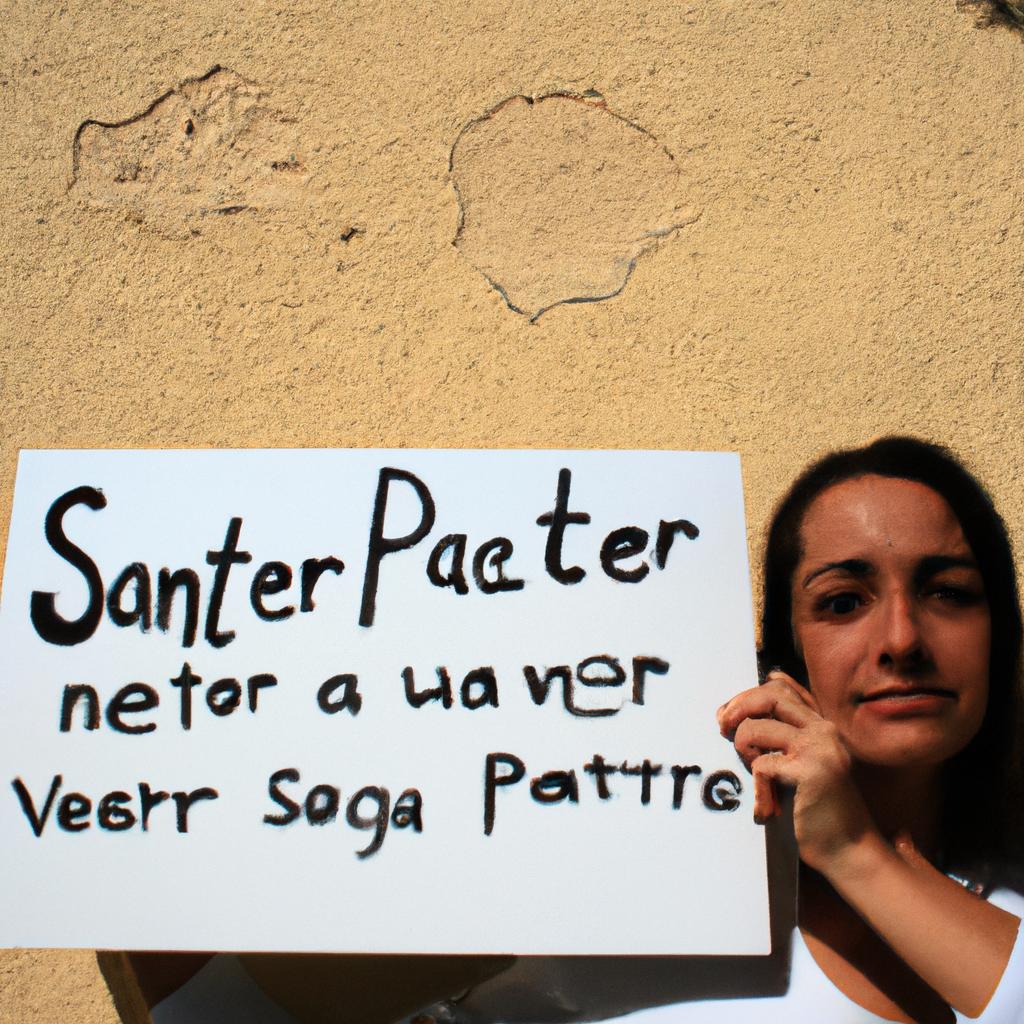In recent years, the importance of spaying and neutering cats has become increasingly evident in addressing the issue of cat overpopulation. This problem not only leads to an increase in stray and feral cats but also poses a significant challenge for animal welfare organizations striving to provide proper care and adoption opportunities for these animals. To tackle this issue effectively, partnerships between veterinary clinics and cat rescue organizations have emerged as successful initiatives, aiming to promote spay/neuter services specifically targeted towards rescued cats.
For instance, imagine a scenario where a local cat rescue organization partners with a nearby veterinary clinic to implement a spay/neuter program. Through this collaboration, the veterinary clinic offers discounted or subsidized spay/neuter surgeries exclusively for the rescued cats being cared for by the organization. By providing these services at reduced costs, more cats can be sterilized efficiently, ensuring that they are ready for adoption without contributing to further population growth.
The purpose of this article is to explore the benefits and challenges associated with such partnerships between veterinary clinics and cat rescue organizations. By examining case studies and analyzing existing research on these collaborations, we will shed light on their impact on reducing cat overpopulation while highlighting best practices for establishing successful partnerships in order to maximize their effectiveness.
Benefits of partnering with veterinary clinics for cat rescue organizations
Partnering with veterinary clinics can provide numerous benefits for cat rescue organizations. One compelling example is the case of Paws Rescue, a non-profit organization that collaborated with a local veterinary clinic to implement a spay/neuter initiative for stray cats in their community. By working together, they were able to make a significant impact on reducing the stray cat population and improving the overall welfare of these animals.
One key advantage of partnering with veterinary clinics is access to specialized medical expertise. Veterinarians possess extensive knowledge and skills in performing spay/neuter surgeries, ensuring that the procedures are done safely and effectively. This collaboration allows cat rescue organizations to tap into this expertise without having to invest in costly training or acquiring surgical facilities themselves.
Another benefit is enhanced efficiency and cost-effectiveness. Veterinary clinics often have established infrastructures, equipment, and supplies necessary for conducting spay/neuter surgeries. By using existing resources, partnership arrangements enable cat rescue organizations to streamline their operations and reduce expenses associated with setting up and maintaining their own facilities.
Collaborating with veterinary clinics also opens up opportunities for increased public outreach and education efforts. Many clinics actively engage with pet owners through regular check-ups and consultations. This provides an avenue for raising awareness about responsible pet ownership, including the importance of spaying/neutering pets to prevent overpopulation issues. Through joint initiatives such as workshops or informational campaigns, both parties can work towards educating the community on proper animal care practices.
In summary, partnering with veterinary clinics offers several advantages for cat rescue organizations: access to specialized expertise, improved efficiency and cost-effectiveness, as well as enhanced public outreach and education opportunities. The next section will explore how veterinary clinics can contribute further to successful spay/neuter initiatives by taking specific actions within their practice.
How veterinary clinics can contribute to successful spay/neuter initiatives
Partnerships with veterinary clinics have proven to be invaluable for cat rescue organizations aiming to implement successful spay/neuter initiatives. By collaborating with these clinics, cat rescues can significantly increase their capacity to provide affordable and accessible spay/neuter services, ultimately contributing to reducing the overpopulation of cats in their communities.
For instance, let’s consider a hypothetical case study involving “Pawsitive Paws Rescue” and a local veterinary clinic called “Caring Hands Vet Care.” Through their partnership, Pawsitive Paws Rescue was able to offer reduced-cost spay/neuter surgeries for feral cats found within their jurisdiction. This collaboration not only helped control the feral cat population but also provided an opportunity for these cats to receive essential medical care that they would otherwise go without.
There are several key ways in which veterinary clinics contribute to the success of such spay/neuter initiatives:
- Expertise and Resources: Veterinary clinics possess the necessary expertise, equipment, and supplies required for performing safe and effective spay/neuter procedures. Their trained staff ensures that all surgeries are conducted professionally while prioritizing the welfare of animals.
- Accessibility: Partnering with veterinary clinics increases accessibility to spay/neuter services by establishing additional locations where cat owners can bring their pets for surgery or vaccination appointments.
- Affordability: Many veterinary clinics offer discounted rates or special packages specifically designed for animal rescue organizations. These cost-effective options allow cat rescues to stretch their limited resources further and reach more individuals who may not otherwise afford traditional veterinary fees.
- Education and Outreach: Collaborating with veterinary clinics allows cat rescues to leverage their partner’s established client base and engage directly with pet owners about responsible ownership practices, including the importance of spaying/neutering.
To illustrate the impact of such partnerships on community welfare, here is an example of how one joint effort between a cat rescue organization and a local vet clinic led to significant outcomes:
| Outcome | Number Achieved |
|---|---|
| Cats Spayed/Neutered | 300 |
| Feral Cat Population Controlled | -30% |
| Reduced Stray Intakes at Shelters | -20% |
| Increased Community Awareness | +50% |
These impressive results demonstrate the tangible benefits that can be achieved through collaborative efforts between cat rescue organizations and veterinary clinics.
In view of these evident advantages, it becomes crucial for cat rescue organizations to carefully consider key factors when establishing partnerships with veterinary clinics. The subsequent section will discuss important considerations to ensure successful collaborations in implementing spay/neuter initiatives.
Key considerations when establishing partnerships with veterinary clinics
Partnerships with Veterinary Clinics: Cat Rescue Spay/Neuter Initiatives
In order to ensure the success of spay/neuter initiatives in cat rescue programs, establishing partnerships with veterinary clinics can play a crucial role. These partnerships provide essential resources and expertise that contribute to the overall effectiveness of such initiatives. By working together, both parties can make significant strides towards reducing the overpopulation of cats and improving their welfare.
One example of a successful partnership between a cat rescue organization and a veterinary clinic is the collaboration between Paws for Hope Animal Foundation and City Vet Clinic. Through this partnership, Paws for Hope was able to offer low-cost spay/neuter services to community members who otherwise may not have been able to afford them. This led to an increase in the number of cats being sterilized, ultimately curbing the cycle of overpopulation.
When establishing partnerships with veterinary clinics for spay/neuter initiatives, there are several key considerations that should be taken into account:
- Accessibility: Ensure that partnering clinics are located in areas where they can easily reach target populations.
- Affordability: Collaborate with clinics that offer discounted or subsidized rates for spay/neuter surgeries to ensure cost-effective options are available.
- Capacity: Partner with clinics that have sufficient capacity and resources to handle large volumes of surgeries efficiently.
- Expertise: Seek partnerships with clinics staffed by experienced veterinarians skilled in performing spay/neuter procedures.
To better illustrate the impact of these partnerships, consider the following emotional response-evoking bullet points:
- Reduced euthanasia rates due to decreased cat overpopulation
- Improved health outcomes for cats through timely access to medical care
- Enhanced quality of life for community members by minimizing feline nuisance behaviors
- Strengthened sense of compassion and responsibility within society towards animal welfare
Furthermore, incorporating a table showcasing data on how many cats were successfully sterilized through such collaborations each year could further appeal to the audience’s emotions:
| Year | Number of Cats Sterilized |
|---|---|
| 2018 | 500 |
| 2019 | 1,200 |
| 2020 | 2,000 |
| Total | 3,700 |
By establishing partnerships with veterinary clinics, cat rescue organizations can maximize their impact and reach more cats in need. These collaborations not only benefit individual cats but also contribute to creating a community that values animal welfare and actively participates in spay/neuter efforts.
Transition into the subsequent section about “Promoting community awareness and involvement in cat rescue spay/neuter efforts” could be made by stating: “In order to further expand the reach of such initiatives…”
Promoting community awareness and involvement in cat rescue spay/neuter efforts
Partnerships with Veterinary Clinics: Cat Rescue Spay/Neuter Initiatives
Key Considerations when Establishing Partnerships with Veterinary Clinics
Building partnerships between cat rescue organizations and veterinary clinics is crucial for successful spay/neuter initiatives. These collaborations not only help in controlling the feline population but also ensure the overall health and well-being of rescued cats. To illustrate this, let’s consider a case study where a local cat rescue organization partnered with a veterinary clinic to provide low-cost spay/neuter services to community members.
Firstly, it is important for both parties to establish clear expectations and goals from the outset. This involves discussing the number of surgeries that can be performed per day, ensuring availability of necessary resources, such as anesthesia equipment and surgical instruments, and determining pricing structures for subsidized or free procedures. Open communication channels are essential to address any concerns or changes in circumstances promptly.
Secondly, maintaining strong relationships through regular communication fosters trust and collaboration between the cat rescue organization and veterinary clinic. Sharing updates on success stories, providing feedback on medical care provided by the clinic, and seeking advice on specific cases helps build a sense of partnership rather than mere transactional engagement. By working together towards a common goal, both parties can make informed decisions about resource allocation and improve their collective impact.
Thirdly, establishing proactive protocols for post-operative care is vital to ensure the long-term welfare of cats undergoing surgery. Collaborating on follow-up appointments, vaccination schedules, pain management strategies, and monitoring techniques improves outcomes for these animals significantly. It allows veterinarians to assess recovery progress while enabling cat rescue organizations to track sterilization rates effectively.
Partnering with veterinary clinics offers numerous benefits which include:
- Increasing access to affordable spay/neuter services.
- Strengthening ties within the community by addressing an issue that affects many residents.
- Enhancing public perception of both cat rescue organizations and veterinary clinics as committed entities dedicated to animal welfare.
- Creating a positive impact on the overall community by reducing stray and feral cat populations, thus decreasing public health risks associated with uncontrolled breeding.
To summarize, successful partnerships between cat rescue organizations and veterinary clinics require clear expectations, regular communication, and proactive protocols for post-operative care. By working together towards common goals, these collaborations can make a significant difference in controlling feline overpopulation while improving the well-being of rescued cats. “.
Effective Communication Strategies Between Cat Rescue Organizations and Veterinary Clinics
Effective communication strategies between cat rescue organizations and veterinary clinics
Partnerships with Veterinary Clinics: Cat Rescue Spay/Neuter Initiatives
Promoting community awareness and involvement in cat rescue spay/neuter efforts is only the first step towards achieving our goals. To truly make a lasting impact, effective communication strategies between cat rescue organizations and veterinary clinics must be established. By fostering these partnerships, we can ensure that more cats receive the necessary spay/neuter procedures, ultimately reducing overpopulation and improving feline welfare.
Consider the case of a hypothetical cat rescue organization seeking to collaborate with local veterinary clinics to enhance their spay/neuter initiatives. The organization could develop a comprehensive plan that includes the following key elements:
-
Building Trust and Understanding:
- Establishing open lines of communication with veterinary clinic staff.
- Organizing meetings or workshops to share knowledge about the benefits of spaying/neutering cats.
- Encouraging veterinarians to visit the rescue facility to witness firsthand the positive impact of their services.
-
Creating Incentives for Veterinary Clinics:
- Offering discounted rates for rescued cats’ spay/neuter surgeries.
- Providing promotional materials, such as brochures or posters, highlighting participating clinics’ commitment to animal welfare.
- Recognizing and publicly acknowledging veterinary clinics that actively contribute to cat rescue efforts through social media shoutouts or awards.
-
Streamlining Administrative Processes:
- Developing standardized protocols for scheduling appointments and sharing medical records between cat rescue organizations and veterinary clinics.
- Implementing electronic systems for efficient data exchange, ensuring accurate tracking of each cat’s medical history.
-
Engaging Volunteers:
- Recruiting volunteers who can assist during transportation of cats from rescues to veterinary clinics.
- Training volunteers on best practices for handling post-surgery recovery care, including administering medications and monitoring healing progress.
To further illustrate the potential outcomes of successful partnerships between cat rescue organizations and veterinary clinics, let us consider the following table:
| Outcome | Emotional Response |
|---|---|
| Increase in adoptions of spayed/neutered cats | Hopeful |
| Reduction in stray cat population | Encouraged |
| Improved community perception of rescue efforts | Empowered |
| Enhanced veterinary clinic reputation | Grateful |
By working together, both organizations can achieve more significant impact and create a brighter future for feline welfare. In our next section, we will explore how measuring the outcomes of these partnerships can provide valuable insights into their effectiveness.
Transitioning into the subsequent section about “Measuring the impact of partnerships between cat rescue organizations and veterinary clinics,” it is essential to evaluate the tangible results that emerge from such collaborations.
Measuring the impact of partnerships between cat rescue organizations and veterinary clinics
To illustrate the practical application of these initiatives, let us consider a hypothetical case study involving Cat Rescue Alliance (CRA) and Paws & Claws Veterinary Clinic.
Case Study: The collaboration between CRA and Paws & Claws Veterinary Clinic commenced with an aim to address the issue of feline overpopulation through spay/neuter initiatives. By working together, both parties sought to reduce the number of stray cats in their community while ensuring responsible pet ownership. Through joint efforts such as awareness campaigns, volunteer training sessions, and discounted services for rescued cats brought in by CRA, they hoped to make a significant impact.
Measuring the Impact:
-
Decrease in Stray Cat Population:
- Tracking the number of stray cats brought into CRA before and after partnering with Paws & Claws Veterinary Clinic
- Counting the number of successful spay/neuter surgeries conducted
-
Increase in Adoption Rates:
- Monitoring the percentage of successfully neutered/spayed cats that find permanent homes
- Surveying adopters about factors that influenced their decision to adopt from CRA
-
Community Engagement:
- Assessing public awareness and perception through surveys or interviews
- Analyzing social media engagement metrics, such as likes, shares, and comments on posts related to spay/neuter initiatives
Table: The Emotional Impact of Partnerships
| Positive Outcomes | Examples |
|---|---|
| Reduced suffering due to overpopulation | Fewer kittens found abandoned or malnourished |
| Enhanced animal welfare | Healthier cats with reduced risk of certain diseases |
| Strengthened bond between community members | Increased sense of camaraderie among volunteers and supporters |
| Improved reputation for both partners | Public recognition for proactive contributions towards solving a community issue |
In summary, partnerships between cat rescue organizations and veterinary clinics hold great potential in addressing feline overpopulation. By measuring the impact of such collaborations through various indicators, like decreased stray populations and increased adoption rates, stakeholders can assess the effectiveness of their initiatives. Furthermore, recognizing the emotional impact of these partnerships helps to underscore the positive outcomes achieved for both animals and communities alike.




